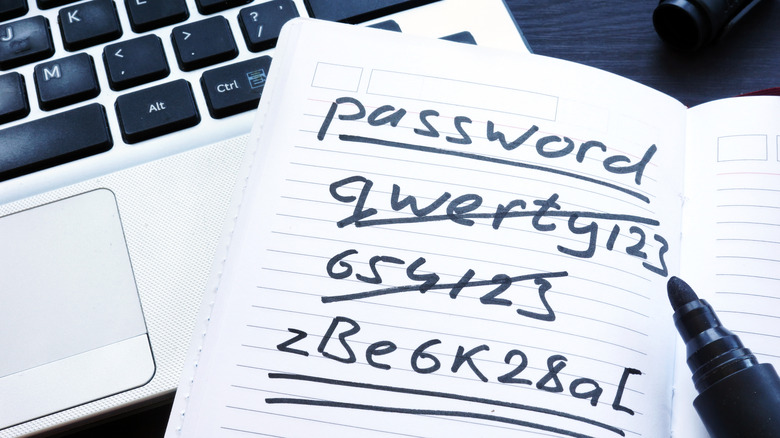Why You Need To Start Using A Password Manager
Typically speaking, according to Dashlane, Americans can have dozens or even more than 100 password-protected online accounts. That means each user has dozens of passwords to memorize and manage, which is why so many people reuse the same password for multiple accounts. People often choose basic, easy password combinations for each account — say, their pet's name, a birthday, or commonly-used, predictable passwords. The downside to this is that easy-to-remember passwords are also easy to crack (or guess.) Google says 27% of Americans have tried to guess somebody else's password, and 17% guessed right (via Google).
Millions of email addresses, passwords, and usernames are daily compromised in data breaches. Websites like Have I Been Pwned let users check and see whether their credentials were exposed in a breach — and there's a reasonable chance a few of yours have been, too. If you are among the 66% of Americans who recycle passwords, data breaches like this leave all your accounts with reused passwords vulnerable.
Even with good password habits, keeping track of dozens of complicated, strong passwords is unrealistic. You'll often get locked out of an account because you can't remember the password. Even if you reset it, there's a chance you'll forget it again (especially if you rarely access the account). Using a password manager is a simple solution for generating and managing unbreakable passwords so you only need to remember the master credentials.
Why you need a password manager
Before we talk about password managers, here's what we mean by strong passwords. A strong password is unique and has uppercase letters, lowercase letters, digits, symbols, and anywhere between 12 to 30 characters (via Wired). Passwords like that are virtually unbreakable, and password managers randomly generate and store them for you. When you sign up for a website or an app, your password manager will suggest a strong password and secures it in an encrypted vault. Even if someone gains access to your password manager and its vault, the passwords would be indecipherable.
When you revisit the same website or app, the password manager will auto-fill your credentials, making logins convenient. The passwords are also synced across all of your devices, so even when generating and storing passwords on one device, you can let the password manager remember and fill in your login details on other devices. With that said, keep in mind that some desktop-based managers encrypt and store passwords locally without syncing.
Most password managers also flag weak or hacked passwords that must be strengthened. They have features that notify you if any of your saved passwords were compromised in a data breach. Plus, a password manager protects you from phishing attacks because it will not allow autofill for a fake webpage.
How to use a password manager
You have plenty of free and paid options for effective password management. For instance, the Google Password Manager is a free password manager built into Chrome and Android; it syncs over your Google account, gives personalized recommendations for your saved passwords, and supports all of your devices. Many free password managers don't support sync, however, and paid password managers are more feature-rich and robust. They usually offer to autofill personal and payment details, allow multi-factor authentication, alert you about data breaches, and even allow password-free sign-in (via Android Authority).
Password managers need one master password for locking and unlocking the vault where all your passwords are saved. It's the only password you need to memorize; the password manager will remember the rest, but it has to be secure, strong, and unique. If you forget the master password, you will lose access to your password vault, though some password managers come with a convenient authenticator utility that logs you in without a master password.
You should start by installing your preferred password manager on your smartphone. The iOS or Android apps for password managers require some elevated permissions, but they work on both websites and apps. To access the password manager on a desktop browser, you can install its web extension for your browser. Your password manager extension will then store login credentials entered into your desktop browser and sync them across all devices.


